Applied
Nonlinear
Control
JEAN-JACQUES E. SLOTINE
Massachusetts Institute of Technology
WEIPING LI
Massachusetts Institute of Technology'
Prentice Hall
Englewood Cliffs, New Jersey 07632
�
Library of Congress Cataloging-in-Publication Data
Slotine, J.-J. E. (Jean-Jacques E.)
Applied nonlinear control / Jean-Jacques E. Slotine, Weiping Li
p.
cm.
Includes bibliographical references.
ISBN 0-13-040890-5
1, Nonlinear control theory.
I. Li, Weiping.
QA402.35.S56 1991
629.8'312-dc20
II. Title.
90-33365
C1P
Editorial/production supervision and
interior design: JENNIFER WENZEL
Cover design: KAREN STEPHENS
Manufacturing Buyer: LORI BULWIN
= ^= © 1991 by Prentice-Hall, Inc.
^=&= A Division of Simon & Schuster
T k
Englewood Cliffs, New Jersey 07632
All rights reserved. No part of this book may be
reproduced, in any form or by any means,
without permission in writing from the publisher.
Printed in the United States of America
20 19 18 17 16 15 14 13 12 1]
ISBN D-13-DHDfiTa-S
Prentice-Hall International (UK) Limited, London
Prentice-Hall of Australia Pty. Limited, Sydney
Prentice-Hall Canada Inc., Toronto
Prentice-Hail Hispanoamericana, S.A., Mexico
Prentice-Hall of India Private Limited, New Delhi
Prentice-Hall of Japan, Inc., Tokyo
Simon & Schuster Asia Pte. Ltd., Singapore
Editora Prentice-Hall do Brasil, Ltda., Rio de Janeiro
�
Contents
Preface
1. Introduction
1.1 Why Nonlinear Control ?
1.2 Nonlinear System Behavior
1.3 An Overview of the Book
1.4 Notes and References
Part I: Nonlinear Systems Analysis
Introduction to Part I
14
2. Phase Plane Analysis
2.1 Concepts of Phase Plane Analysis
2.1.1 Phase Portraits
2.1.2 Singular Points
2.1.3 Symmetry in Phase Plane Portraits
18
20
22
2.2 Constructing Phase Portraits
2.3 Determining Time from Phase Portraits
2.4 Phase Plane Analysis of Linear Systems
2.5 Phase Plane Analysis of Nonlinear Systems
2.6 Existence of Limit Cycles
2.7 Summary
2.8 Notes and References
2.9 Exercises
xi
1
1
4
12
13
14
17
18
23
29
30
32
36
38
38
38
�
VI11
3. Fundamentals of Lyapunov Theory
3.1 Nonlinear Systems and Equilibrium Points
3.2 Concepts of Stability
3.3 Linearization and Local Stability
3.4 Lyapunov's Direct Method
3.4.1 Positive Definite Functions and Lyapunov Functions
3.4.2 Equilibrium Point Theorems
3.4.3 Invariant Set Theorems
61
68
3.5 System Analysis Based on Lyapunov's Direct Method
3.5.1 Lyapunov Analysis of Linear Time-Invariant Systems
3.5.2 Krasovskii's Method
3.5.3 The Variable Gradient Method
3.5.4 Physically Motivated Lyapunov Functions
3.5.5 Performance Analysis
83
86
88
91
58
77
3.6 Control Design Based on Lyapunov's Direct Method
3.7 Summary
3.8 Notes and References
3.9 Exercises
4. Advanced Stability Theory
4.1 Concepts of Stability for Non-Autonomous Systems
4.2 Lyapunov Analysis of Non-Autonomous Systems
4.2.1 Lyapunov's Direct Method for Non-Autonomous Systems
4.2.2 Lyapunov Analysis of Linear Time-Varying Systems
4.2.3 The Linearization Method for Non-Autonomous Systems
114
105
116
4.3 * Instability Theorems
4.4 * Existence of Lyapunov Functions
4.5 Lyapunov-Like Analysis Using Barbalat's Lemma
4.5.1 Asymptotic Properties of Functions and Their Derivatives
4.5.2 Barbalat's Lemma
123
122
4.6 Positive Linear Systems
4.6.1 PR and SPR Transfer Functions
4.6.2 The Kalman-Yakubovich Lemma
4.6.3 Positive Real Transfer Matrices
4.7 The Passivity Formalism
4.7.1 Block Combinations
132
4.7.2 Passivity in Linear Systems
137
126
130
131
40
41
47
53
57
76
94
95
96
97
100
101
105
117
120
122
126
132
�
4.8 * Absolute Stability
4.9 * Establishing Boundedness of Signals
4.10 * Existence and Unicity of Solutions
4.11 Summary
4.12 Notes and References
4.13 Exercises
5. Describing Function Analysis
5.1 Describing Function Fundamentals
5.1.1 An Example of Describing Function Analysis
5.1.2 Applications Domain
5.1.3 Basic Assumptions
5.1.4 Basic Definitions
5.1.5 Computing Describing Functions
165
167
162
164
158
5.2 Common Nonlinearities In Control Systems
5.3 Describing Functions of Common Nonlinearities
5.4 Describing Function Analysis of Nonlinear Systems
5.4.1 The Nyquist Criterion and Its Extension
5.4.2 Existence of Limit Cycles
5.4.3 Stability of Limit Cycles
5.4.4 Reliability of Describing Function Analysis
182
184
180
186
5.5 Summary
5.6 Notes and References
5.7 Exercises
Part II: Nonlinear Control Systems Design
Introduction to Part II
191
6. Feedback Linearization
6.1 Intuitive Concepts
6.1.1 Feedback Linearization And The Canonical Form
6.1.2 Input-State Linearization
6.1.3 Input-Output Linearization
213
216
6.2 Mathematical Tools
6.3
Input-State Linearization of SISO Systems
IX
142
147
151
153
153
154
157
158
169
172
179
187
188
188
191
207
208
229
236
208
�
6.4 Input-Output Linearization of SISO Systems
6.5 * Multi-Input Systems
6.6 Summary
6.7 Notes and References
6.8 Exercises
7. Sliding Control
7.1 Sliding Surfaces
7.1.1 A Notational Simplification
7.1.2 * Filippov's Construction of the Equivalent Dynamics
7.1.3 Perfect Performance - At a Price
7.1.4 Direct Implementations of Switching Control Laws
7.2 Continuous Approximations of Switching Control Laws
7.3 The Modeling/Performance Trade-Offs
278
285
283
289
7.4 * Multi-Input Systems
7.5 Summary
7.6 Notes and References
7.7 Exercises
8. Adaptive Control
8.1 Basic Concepts in Adaptive Control
8.1.1 Why Adaptive Control ?
8.1.2 What Is Adaptive Control ?
8.1.3 How To Design Adaptive Controllers ?
312
315
323
8.2 Adaptive Control of First-Order Systems
8.3 Adaptive Control of Linear Systems With Full State Feedback
8.4 Adaptive Control of Linear Systems With Output Feedback
8.4.1 Linear Systems With Relative Degree One
8.4.2 Linear Systems With Higher Relative Degree
340
346
8.5 Adaptive Control of Nonlinear Systems
8.6 Robustness of Adaptive Control Systems
8.7 * On-Line Parameter Estimation
246
266
270
271
271
276
277
290
301
303
306
307
307
311
312
326
335
339
350
353
358
8.7.1 Linear Parametrization Model
8.7.2 Prediction-Error-Based Estimation Methods
8.7.3 The Gradient Estimator
8.7.4 The Standard Least-Squares Estimator
364
359
370
364
�
8.7.5 Least-Squares With Exponential Forgetting
8.7.6 Bounded-Gain Forgetting
8.7.7 Concluding Remarks and Implementation Issues
376
374
381
1.8 Composite Adaptation
1.9 Summary
1.10 Notes and References
1.11 Exercises
9. Control of Multi-Input Physical Systems
9.1 Robotics as a Prototype
9.1.1 Position Control
9.1.2 Trajectory Control
397
9.2 Adaptive Robot Trajectory Control
404
394
9.2.1 The Basic Algorithm
9.2.2 * Composite Adaptive Trajectory Control
9.3 Putting Physics in Control
9.3.1 High-Frequency Unmodeled Dynamics
9.3.2 Conservative and Dissipative Dynamics
9.3.3 Robotics as a Metaphor
419
9.4 Spacecraft Control
9.4.1 The Spacecraft Model
9.4.2 Attitude Control
425
422
9.5 Summary
9.6 Notes and References
9.7 Exercises
BIBLIOGRAPHY
INDEX
411
416
418
382
388
389
389
392
393
403
416
422
432
433
433
437
459
�
Preface
In recent years, the availability of powerful low-cost microprocessors has spurred
great advances in the theory and applications of nonlinear control. In terms of theory,
major strides have been made in the areas of feedback linearization, sliding control,
and nonlinear adaptation techniques.
In terms of applications, many practical
nonlinear control systems have been developed, ranging from digital "fly-by-wire"
flight control systems for aircraft, to "drive-by-wire" automobiles, to advanced robotic
and space systems. As a result, the subject of nonlinear control is occupying an
increasingly important place in automatic control engineering, and has become a
necessary part of the fundamental background of control engineers.
This book, based on a course developed at MIT, is intended as a textbook for
senior and graduate students, and as a self-study book for practicing engineers. Its
objective is to present the fundamental results of modern nonlinear control while
keeping the mathematical complexity to a minimum, and to demonstrate their use and
implications in the design of practical nonlinear control systems. Although a major
motivation of this book is to detail the many recent developments in nonlinear control,
classical techniques such as phase plane analysis and the describing function method
are also treated, because of their continued practical importance.
In order to achieve our fundamental objective, we have tried to bring the
following features to this book:
• Readability: Particular attention is paid to the readability of the book by
carefully organizing the concepts, intuitively interpreting the major results, and
selectively using the mathematical tools. The readers are only assumed to have had
one introductory control course. No mathematical background beyond ordinary
differential equations and elementary matrix algebra is required. For each new
result, interpretation is emphasized rather than mathematics. For each major result,
we try to ask and answer the following key questions: What does the result
intuitively and physically mean? How can it be applied to practical problems?
What is its relationship to other theorems? All major concepts and results are
demonstrated by examples. We believe that learning and generalization from
examples are crucial for proficiency in applying any theoretical result.
• Practicality: The choice and emphasis of materials is guided by the basic
xiii
�
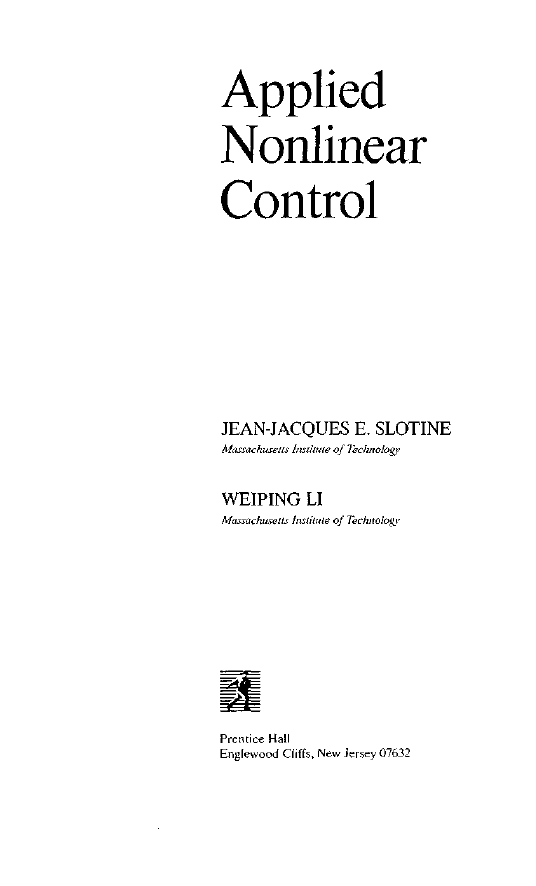

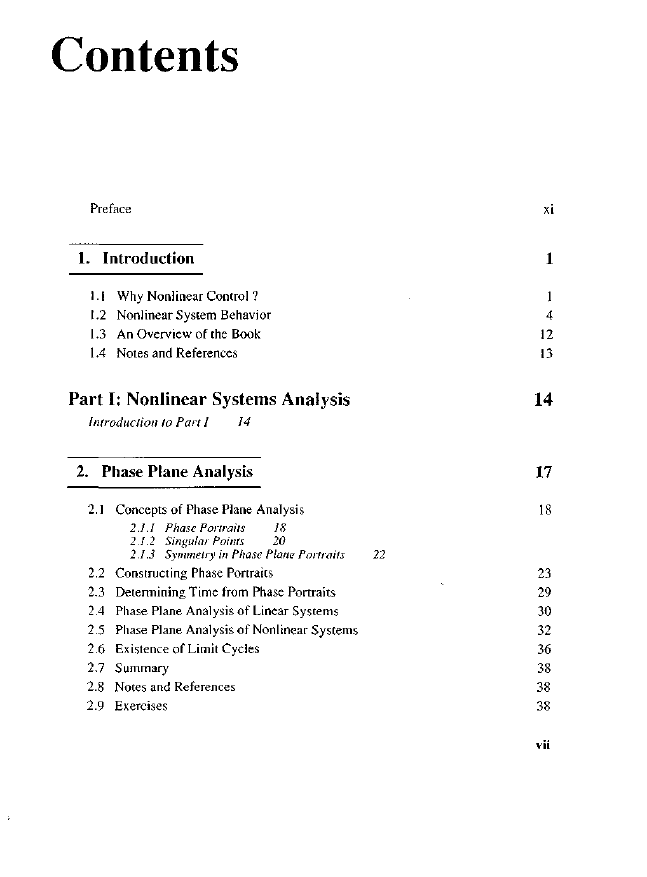


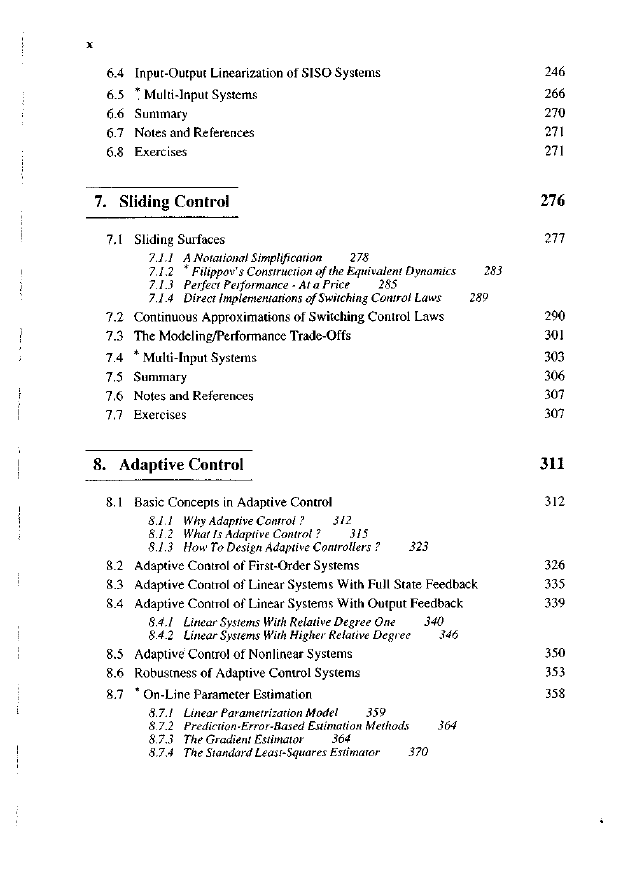
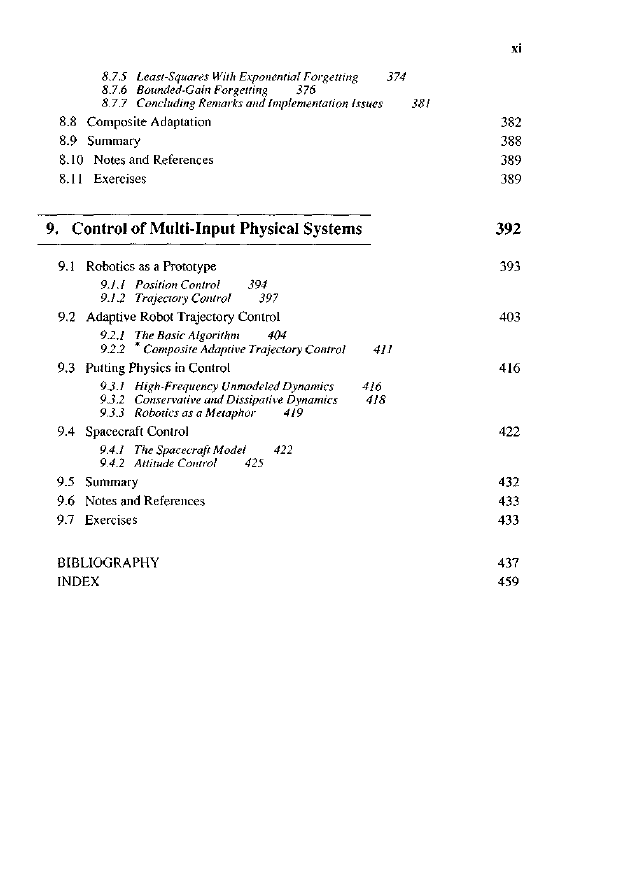
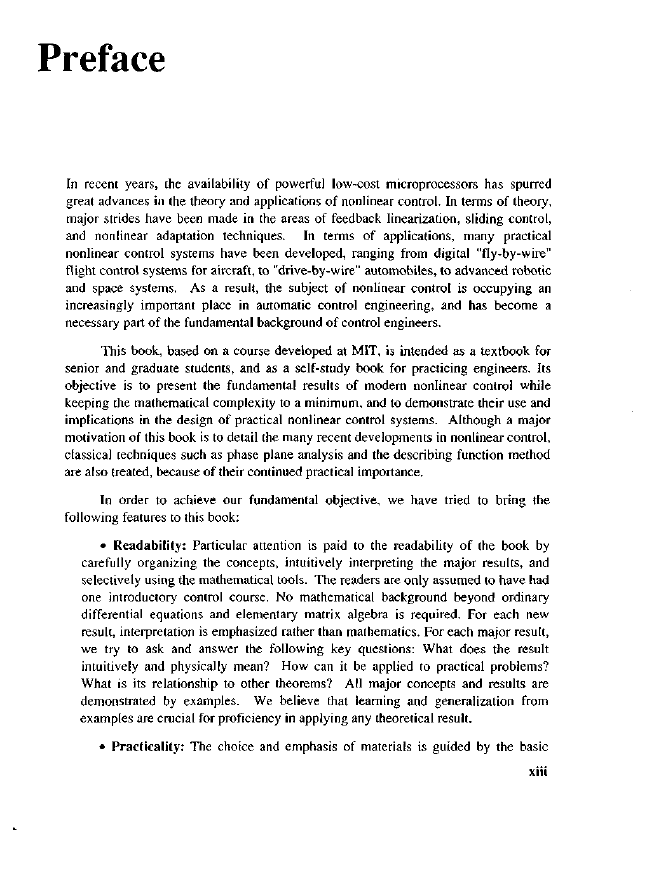








 2023年江西萍乡中考道德与法治真题及答案.doc
2023年江西萍乡中考道德与法治真题及答案.doc 2012年重庆南川中考生物真题及答案.doc
2012年重庆南川中考生物真题及答案.doc 2013年江西师范大学地理学综合及文艺理论基础考研真题.doc
2013年江西师范大学地理学综合及文艺理论基础考研真题.doc 2020年四川甘孜小升初语文真题及答案I卷.doc
2020年四川甘孜小升初语文真题及答案I卷.doc 2020年注册岩土工程师专业基础考试真题及答案.doc
2020年注册岩土工程师专业基础考试真题及答案.doc 2023-2024学年福建省厦门市九年级上学期数学月考试题及答案.doc
2023-2024学年福建省厦门市九年级上学期数学月考试题及答案.doc 2021-2022学年辽宁省沈阳市大东区九年级上学期语文期末试题及答案.doc
2021-2022学年辽宁省沈阳市大东区九年级上学期语文期末试题及答案.doc 2022-2023学年北京东城区初三第一学期物理期末试卷及答案.doc
2022-2023学年北京东城区初三第一学期物理期末试卷及答案.doc 2018上半年江西教师资格初中地理学科知识与教学能力真题及答案.doc
2018上半年江西教师资格初中地理学科知识与教学能力真题及答案.doc 2012年河北国家公务员申论考试真题及答案-省级.doc
2012年河北国家公务员申论考试真题及答案-省级.doc 2020-2021学年江苏省扬州市江都区邵樊片九年级上学期数学第一次质量检测试题及答案.doc
2020-2021学年江苏省扬州市江都区邵樊片九年级上学期数学第一次质量检测试题及答案.doc 2022下半年黑龙江教师资格证中学综合素质真题及答案.doc
2022下半年黑龙江教师资格证中学综合素质真题及答案.doc